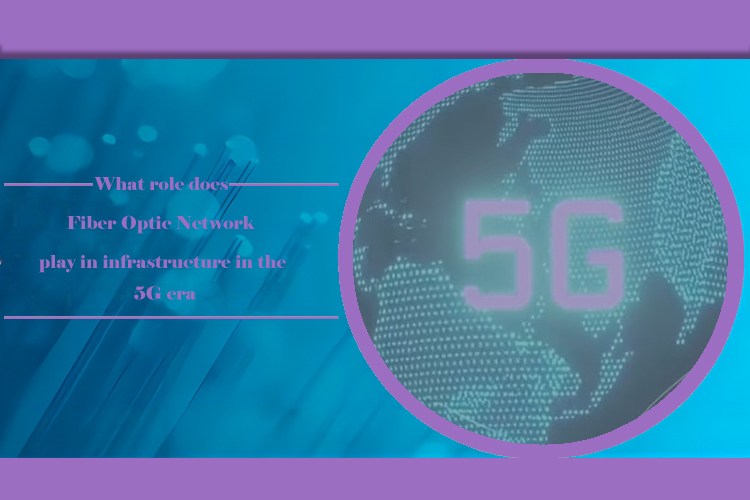The Crucial Role of Fiber Optic Networks in the Infrastructure of the 5G Era
Introduction
In the ever-evolving digital landscape, the transition to the 5G era is upon us. As the demand for faster and more reliable connectivity grows, the role of fiber optic networks in supporting the infrastructure becomes increasingly vital. This article explores the significant role that fiber optic networks play in the 5G era, highlighting their impact on connectivity, data transmission, and the future of technology-driven advancements.

Section 1: The Backbone of 5G Infrastructure Fiber optic networks serve as the backbone of the 5G infrastructure, providing the necessary high-speed connectivity and data transmission capabilities. Unlike traditional copper-based networks, fiber optic cables transmit data through pulses of light, enabling faster speeds and greater bandwidth. With 5G technology set to revolutionize various industries, fiber optic networks lay the foundation for this digital transformation.
Section 2: Enabling High-Speed Connectivity As the demand for faster internet speeds and low latency increases, fiber optic networks are crucial in meeting these requirements. With the ability to transmit data at the speed of light, fiber optic cables ensure seamless connectivity for 5G users. This is particularly important for applications such as video streaming, online gaming, virtual reality, and Internet of Things (IoT) devices, which heavily rely on high-speed connections.
Section 3: Supporting Massive Data Transmission The 5G era will witness an exponential increase in data transmission due to the proliferation of connected devices and emerging technologies. Fiber optic networks can handle large volumes of data without degradation, making them indispensable in supporting this surge. With their high bandwidth capacity, fiber optic cables can accommodate the massive data demands of smart cities, autonomous vehicles, and other data-intensive applications.
Section 4: Enhancing Network Reliability and Resilience In the 5G era, network reliability and resilience are paramount. Fiber optic networks offer greater reliability compared to traditional copper-based networks, as they are less susceptible to electromagnetic interference and signal loss. This resilience ensures consistent connectivity, even in adverse weather conditions or high-demand scenarios, making fiber optic networks ideal for critical applications such as healthcare, emergency services, and public safety.
Section 5: Facilitating Future Technological Advancements Fiber optic networks are not only instrumental in the present but also pave the way for future technological advancements. As the world advances towards smart cities, artificial intelligence, and the Internet of Things, fiber optic networks will play a crucial role in enabling these innovations. Their high bandwidth capabilities and low latency will be essential in supporting the complex network infrastructure required for these advancements.
Conclusion
In conclusion, fiber optic networks are the backbone of the 5G era, serving as the foundation for high-speed connectivity, massive data transmission, and future technological advancements. As the demand for faster and more reliable connectivity continues to grow, the importance of fiber optic networks in supporting the infrastructure cannot be overstated. With their ability to provide seamless connectivity, enhanced reliability, and pave the way for transformative technologies, fiber optic networks are poised to shape the future of the digital world.
FAQs:
Q1: What is the main advantage of fiber optic networks over traditional copper-based networks?
A1: Fiber optic networks offer faster speeds, greater bandwidth, and higher reliability compared to traditional copper-based networks. They transmit data through pulses of light, enabling seamless connectivity and supporting the demands of the 5G era.
Q2: How do fiber optic networks support massive data transmission in the 5G era?
A2: Fiber optic networks have a high bandwidth capacity, allowing them to handle large volumes of data without degradation. This capability makes them essential in supporting the data-intensive applications and emerging technologies of the 5G era.
Q3: How do fiber optic networks enhance network reliability and resilience?
A3: Fiber optic networks are less susceptible to electromagnetic interference and signal loss, offering greater reliability compared to traditional networks. This resilience ensures consistent connectivity, even in adverse conditions, making them ideal for critical applications.
Q4: What role do fiber optic networks play in future technological advancements?
A4: Fiber optic networks pave the way for future technological advancements such as smart cities, AI, and IoT. With their high bandwidth capabilities and low latency, they are crucial in supporting the complex network infrastructure required for these innovations.
Q5: Can fiber optic networks support the demands of applications like video streaming and online gaming?
A5: Yes, fiber optic networks are well-suited for applications that require high-speed connectivity, such as video streaming and online gaming. Their ability to transmit data at the speed of light ensures a seamless user experience without latency or buffering issues.
Keywords: fiber optic networks, 5G era, infrastructure, connectivity, data transmission, high-speed, reliability, resilience, future advancements.

 The Future of Fiber Optic Communication Network Architecture: Evolution and the Role of SDON Technology
The Future of Fiber Optic Communication Network Architecture: Evolution and the Role of SDON Technology
 What opportunities and challenges does free-space optical communication technology face?
What opportunities and challenges does free-space optical communication technology face?
 Opelink MPO Products for High-Speed Data Center Applications
Opelink MPO Products for High-Speed Data Center Applications
 CWDM vs. DWDM: Which Optical Transmission Technology Should You Choose?
CWDM vs. DWDM: Which Optical Transmission Technology Should You Choose?